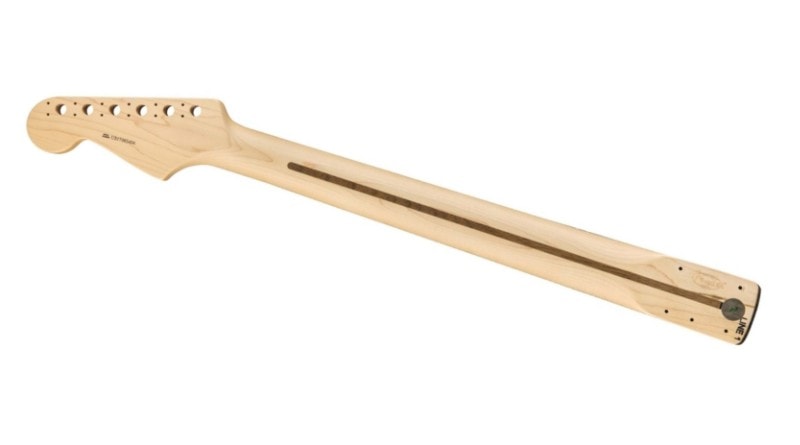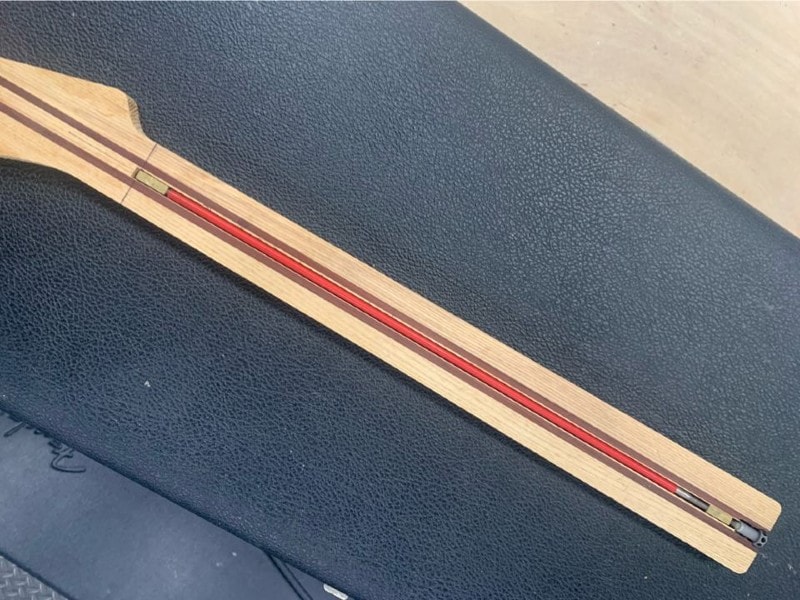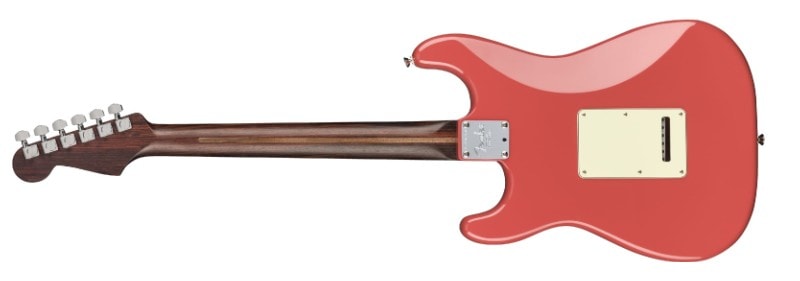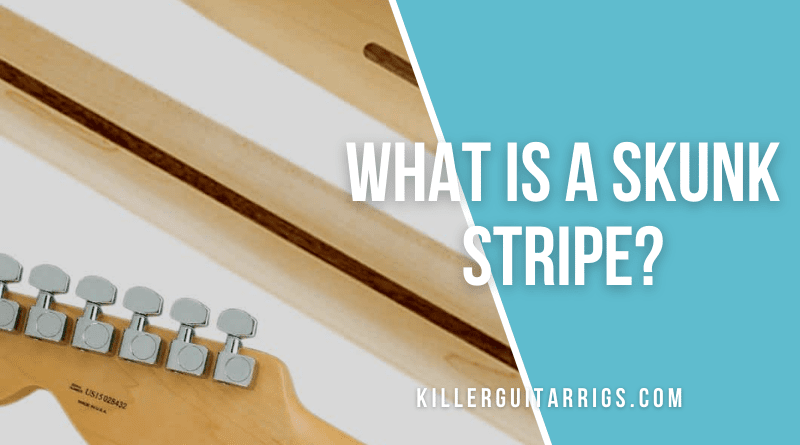If you own a fender guitar and you’ve ever wondered what the stripe on the back of the neck was for, you’re probably not alone. Is it decorative? Does it have a function of some sort? These are the types of questions that are often asked about the distinctive marking, which is known as a “Skunk Stripe“.
In this KillerGuitarRigs Guide, we’ll be digging into the history of the skunk stripe. We’ll be looking at why it exists in the first place, whether it is still used, and whether it has any effects on the tone or playability.
Contents
- What is a Skunk Stripe?
- Why did Fender Start Putting Skunk Stripes on Guitars?
- What is a Truss Rod?
- Has Fender Always Used Skunk Stripes?
- Are there any Benefits to the Skunk Stripe?
- When did the Skunk Stripe Return to Use?
- How to Find Fender Models that Don’t Have a Skunk Stripe
- Final Thoughts on Skunk Stripes
What is a Skunk Stripe?

Put simply, a skunk stripe is the thin, dark stripe of wood that runs down the back of a guitar’s neck. The stripe itself is usually made from walnut, which is why it stands out so much against the lighter colored maple. The skunk stripe is synonymous with Fender, although other brands have adopted it on some of their own models, too.
Why did Fender Start Putting Skunk Stripes on Guitars?
The earliest Fender Esquires were actually made without a truss rod, and legend has it that Don Randall, who was one of Leo Fender’s right hand men in the early days of the company, had to work hard to persuade him to start incorporating them into their necks.
After a run of around 50 Esquires with truss rod free necks, Fender finally conceded and agreed to install them on subsequent builds. The main issue was that the necks at the time were one piece maple, meaning the only way to install the truss rods was to rout the back of the neck and install the rod from the rear.
Fender filled in the remaining gap with walnut after the truss rods were installed. The contrast of light and dark wood looked great and proved to be extremely popular. The use of walnut was purely an aesthetic choice, however, and offered no performance benefit.
What is a Truss Rod?

A truss rod is a reinforcement bar that runs along the length, or part of the length, of a guitar’s neck. Early truss rods were simply metal shafts designed to provide stiffening for the neck and to prevent warping, but later designs became adjustable, allowing guitarists to adjust their height of action.
Some guitars migrated away from metal towards high tech materials like carbon fiber and graphite. This was done for weight saving, and also because these materials are less susceptible to changes in temperature and humidity than metal.
Has Fender Always Used Skunk Stripes?
The skunk stripe survived from 1950 to 1959, at which point Fender started using rosewood fretboards on their maple necks. Because this was now 2 piece construction, it was much more straight forward to create the channel for the truss rod on the top of the neck, and hide it with the fretboard. At this point, the skunk stripe was redundant and disappeared from use.
Are there any Benefits to the Skunk Stripe?

While there are no immediate performance benefits to the player, guitars with skunk stripes still retain some benefits over those with truss rods installed under the fretboard. For example, in the event that a truss rod breaks, or ends up with a stripped head and requires replacement, on non skunk stripe guitars, this means one of two solutions – either an invasive repair that requires removal and replacement of the entire fretboard or total replacement of the neck.
On a guitar with a skunk stripe, with careful application of heat to the back of the neck, the skunk stripe can be worked free, exposing the truss rod and allowing for a simple replacement. This is a much more inexpensive approach to repair than outright replacement of the neck or fretboard.
When did the Skunk Stripe Return to Use?
Fender ended up bringing back the skunk stripe 10 years later, when, in 1969 they offered one piece maple neck and fretboards as an optional extra on certain models. Interestingly, the skunk stripe became standard once again in 1971 as Fender introduced the Bullet truss rod system for the Stratocaster.
The Bullet truss rod system was a big departure from the existing construction method, as it moved the adjustment point from the heel of the neck to the headstock end. Building the necks this way once again required a rear installation of the truss rod, and therefore, there was once again a need to fill the cavity, and so the skunk stripe returned. Eventually, Fender would start building all of their new models with rear installed truss rods and skunk stripes.
How to Find Fender Models that Don’t Have a Skunk Stripe
While Fender did make the skunk stripe a standard feature again, there is still an exception to the rule. Any reissue or recreation of a vintage model that was originally made without a skunk stripe will still be made to original specs, without the stripe. The same also goes for modern models designed with vintage features.
The easiest way to spot whether or not it should have a skunk stripe is if it has Vintage, Traditional, Classic, or Original in the model name.
Final Thoughts on Skunk Stripes
For some, the skunk stripe has become so closely associated with Fender guitars that they immediately perceive models without the marking to be “lesser”, especially if they are uninformed as to the true purpose.
Whether or not you like the look of the skunk stripe, with this information you should now be able to spot what type of construction you’re looking at when shopping for guitars, specifically Fenders. This can be extremely helpful, especially with pre owned models where the seller may not have too much information about the instrument.


